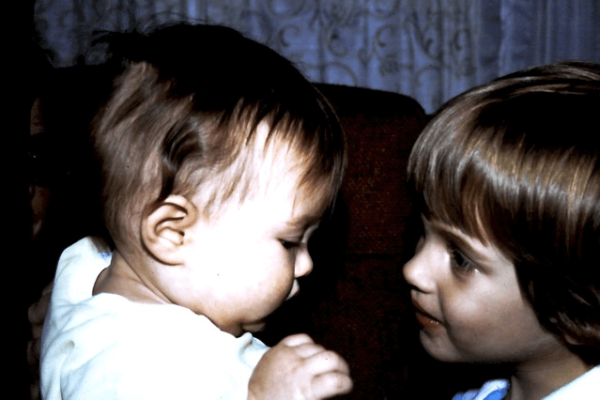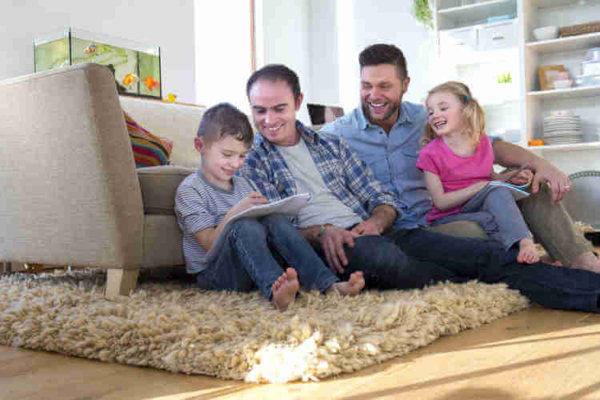Teaching Consent & Body Autonomy to Nanny Children
How do you teach a child consent and body autonomy?
Fostering an environment with a focus on consent and body autonomy is one of my top priorities as a nanny. I always want my nanny charges to feel like they are in charge of their bodies and what happens to them. This is secondary only to keeping them safe while they’re with me. Here are some different ways and phrases that I use to help teach consent and autonomy with children of all ages!
“May I give you a hug? Tickle?”
I would much prefer someone asking for a hug before they just glom on to me. This can be hard to remember because little kiddos are just so darn cute! More importantly than snuggling those cuties is teaching that they are in charge of their body. I always try to remember to ask “may I give you a hug?” before I do. I do the same before I tickle, cuddle, snuggle, or generally touch them at all. I also give that reminder before they give me a hug or touch to model assertiveness. “I love your hugs, but please ask first.” I also make sure to stop tickling or touching the instant I hear them say, “stop!” Playing Red Light, Green Light is a great way to practice starting and stopping with verbal cues.
“Who’s the boss of your body?”
I frequently ask children, “Who’s the boss of your body?” There’s a ,super catchy song and video that I love about this. It really gets stuck in your head, but I love hearing a 3-year-old singing to themselves, “I’m the boss of my own body! I’m the boss of my own body!” I often give a request like, “It’s pretty chilly so I’m going to wear a coat. I’d like for you to wear a coat too, but you’re the boss of your body. You decide.”
“I’m going to pick you up.”
I start telling even the tiniest babies what I’m going to do to their bodies. Children develop receptive language way before they have their expressive language, so even with the littlest babies I work with, I’m explaining what and why I’m touching or moving them, and I give a small pause before I actually do the action. It’s respectful and builds knowledge and vocabulary! “You’re awake! I’m going to pick you up and take you out of the crib now.” “Your diaper is wet. I’m going to pick you up and put you on the changing table.”
“Can I wipe your face? Can I put this on you?”
Think about how absolutely bizarre and unpleasant it would be if someone snuck up behind you and then whipped a napkin around and started wiping your mouth. I would be so surprised and unsettled! Yet have we not all done this to a messy toddler? I ask “Can I wipe your face?” before beginning. Same with wiping noses, putting on shoes and clothes, etc. If they say no, I do ask myself if it’s something that needs to happen right in that instant or if I can wait a moment before asking again. If they say no, offer a limited choice: “Can I wipe your mouth or would you like to?” “Which shoe should we put on first?”
“It’s okay to change your mind.”
What a great reminder for us all! Of course children are allowed to change their mind, and what a powerful message to start teaching this at a young age. I try to fit this in when I notice a child making a small change, for example starting to color with markers, then switching to crayons. Not a big deal at all! Or perhaps we get a toy out, and they decide quickly to do something else. No problem! When I say “it’s okay to change your mind,” I often picture a teenager in a situation with another teenager who has started doing something physical and then decided it’s time to stop. How meaningful for both parties to know from a young age that it’s absolutely okay to change their mind, and that we respect that choice as soon as they let us know.
“Stop Means Stop!”
I don’t hesitate to jump in if I hear a child saying “stop” and another child doesn’t stop. I also keep a firm expectation that children stop when I say stop, too. This is both a safety issue and helps with consent. A fun way to practice this is to do something silly like a freeze dance game where everyone stops at the moment they hear “stop!” I try to reserve saying stop for moments where I really need them to stop immediately, and use other phrases like, “please wait” or “hold on” for situations where there’s not a safety or body issue.
Ask Before Helping
If we jump in and help without asking, it implies that we don’t think they are capable. Ask before you step in to help, unless it’s a matter of safety. It can be hard to watch children struggle, but they learn through that experience, and we can still offer encouraging responses and emotional support. It’s also a good way to get children to practice asking for help which is crucial in a multi-child setting like a classroom. Even if a child asks to be put into a swing, I’ll ask to confirm that they want to be pushed before making the assumption.
Using Correct Names for Body Parts
Even though it can be awkward at first, I try to always use correct names for body parts when working with children. According to the City University of New York, a study showed that sex offenders were less likely to offend against children who used correct names for body parts because the offenders believed there was a higher risk of getting caught. That’s certainly worth the awkwardness of using the correct terminology!
Choosing Their Own Clothes
One way we can help children feel in control of their own bodies is by letting them choose their own clothing and outfits. They may not choose coordinating outfits that we would wear, but I love seeing that confidence when they pick out something they love! This is also a gentle opportunity to let natural consequences teach some lessons. If they choose flip flops in the rain, they might get wet feet, but they’ll live. Perhaps they’ll learn that long dress-up gowns aren’t ideal for playing at the playground or that there’s a reason that most of us don’t wear shorts in the middle of winter. Children learn from experience and practice!
Serving Their Own Food
I adore Ellyn Satter’s Division of Responsibility in Feeding. A very brief overview of Satter’s philosophy is that as adults, we are responsible for choosing, preparing, and providing food, and that we trust children to eat the amount they need. One way we can do this is by serving food family-style and letting children serve their own portions and eat what they care to. Forcing children to eat what they don’t want to is unpleasant, and how can we possibly know whether or not they are full or hungry? Families may have different preferences and rules around feeding, so check with them first.
Don’t Direct or Micromanage Free Play
This can be tricky for me because I want to be involved in their play, but I really try to bite my tongue and not offer too many suggestions when children are enjoying free play. They have so many of their own creative ideas and listen to me for so much of the day, they don’t need me directing their free play time! This is also such a nice time to sit back and enjoy a moment of mindfulness or observation.
The more often I use these strategies and phrases, the more natural it becomes. Of course there are occasional times when you have to jump in for safety, but supporting autonomy and consent is something I always have in my mind at work. Imagine a generation of people who all have strong bodily autonomy and know the importance of both giving and receiving consent! Talk to your nanny families about how you support consent and autonomy while you’re with their children. We are in such a unique position to follow our nanny family’s directions and philosophy while also making many, many judgement calls each day. Be open and communicative, and remember you’re a team working with parents towards the best for each individual child.





Comments